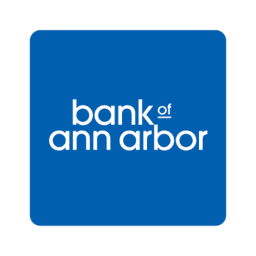Whether you live in Detroit or Grand Rapids, you have no shortage of banking options. From smaller independent to massive national banks, there are several options, each with unique benefits and drawbacks to consider.
The key is to find the bank that best matches your financial requirements and goals.
We’ve rated and compared dozens of banks with a presence in Michigan, narrowing the list down to the top ten. Read on for our recommendations for the best banks in Michigan.
10 Best Banks in Michigan
To choose the best banks in Michigan, we evaluated banks based on their product lineup, accessibility, customer experience, account features, and fees. We also factored in whether or not they offer promotions for new customers.
Here are the best banks in Michigan that you can open an account with today:
- Ally Bank
- Fifth Third Bank
- Flagstar Bank
- Bank of Ann Arbor
- Comerica Bank
- PNC Bank
- Chase Bank
- Citizens Bank
- Bank of America
- Huntington Bank
See Michigan’s Best Bank Bonus Offers & Promotions
1. Ally Bank 
Best: Online Bank
Ally is an online bank with no physical locations in Michigan or any other state. As an online bank, it has fewer overhead costs, which allows it to offer better rates and lower fees than most of the competition.
It’s the top online bank on our list, with a streamlined mobile app that allows you to easily complete Zelle transactions, transfer funds between Ally accounts, and manage your finances.
Accounts
While Ally doesn’t offer business bank accounts, it does offer personal checking, savings, CDs, and MMAs, as well as credit cards, IRAs, and loans.
Its checking and savings accounts have no monthly maintenance fees or minimum deposit requirements. Ally Spend has perks like 2-day early pay, mobile deposits, and free overdraft coverage, paying a solid APY on your account balance.
The APY rate on Ally’s savings accounts is substantially higher than the national average, and the account is easy to fund with automated transfers and round-ups.
Pros:
- Competitive APY
- Free overdraft protection
- Large ATM network
Cons:
- No physical branches
- No business accounts
Learn More:
2. Fifth Third Bank 
Best: Customer Service
Fifth Third Bank is a community bank serving the Midwest. The name is the product of a 1909 merger between Fifth National Bank and Third National Bank. It obtained its national charter in 2019 and has more than 1,100 branches today, with an extensive lineup of deposit accounts, loans, investment products, insurance, and credit cards.
Fifth Third stands out for its customer service, consistently ranking in J.D. Power’s surveys of the nation’s top banks, earning solid app store ratings, and having widespread availability.
Accounts
Fifth Third has several business bank accounts, as well as checking accounts, savings accounts, CDs, and MMAs for individuals.
It offers one traditional checking account and several specialized accounts, including accounts for military members and individuals with a disability, among others. The traditional checking account has no monthly fee and no balance requirements. It offers features like free overdraft protection and early pay with direct deposits.
Fifth Third’s savings account has a $5 monthly fee, which you can waive with several qualifying actions. It also pays a small amount of interest, which is on par with traditional banks but not as competitive as online banks or some credit unions.
Pros:
- Free checking account option
- Branch/ATM access
- Overdraft grace period
Cons:
- Low savings rate
- High overdraft fees
Learn More:
3. Flagstar Bank 
Best: Bank for Mortgages
Flagstar is a regional bank operating in the Midwest. While it does offer mobile and online banking, you can’t open an account online. Instead, you will need to give the bank a call or head to the nearest branch to apply.
Flagstar has a lot to offer individuals looking for a regional bank, but it truly shines in the mortgage department. Flagstar Bank currently has an average 4.97/5 rating from homebuyers on Zillow. It’s a top mortgage originator with several flexible mortgage and refinancing options.
Accounts
In addition to its mortgages, Flagstar offers several bank accounts. That includes four checking accounts, with a free basic checking account that has no minimum balance requirement.
There are also a handful of savings accounts to choose from, including a High Yield Savings account that offers far better rates than most traditional banks; however, it comes with a steep monthly fee that’s difficult to waive.
Flagstar Bank also offers other accounts such as business and commercial accounts, CDs and IRAs, credit cards, and personal loans.
Pros:
- Highly rated mortgage lender
- Free checking account
- Multiple savings account options
Cons:
- Steep monthly fees for highest interest rates
- No online account application
Learn More:
4. Bank of Ann Arbor 
Best: Local Bank in MI
Bank of Ann Arbor is a community bank headquartered in Ann Arbor. Following its latest acquisition at the end of 2021, it operates 17 branches across Michigan.
If you’re looking for a community-based bank with hands-on customer service and a solid lineup of products, Bank of Ann Arbor should be on your shortlist. In our evaluation, it stood out as the best local bank in Michigan.
Accounts
The Bank of Ann Arbor packs quite a punch for a small bank, offering the same range of products and services you’ll find at much bigger banks. As it’s a community bank, you’ll also find it to be competitive in its pricing.
Checking account maintenance fees start at $0, while the fee for a savings account starts at $2.00. You’ll need to deposit a minimum of $100 to open a savings account, or $500 for a basic checking account.
You can also open a CD, MMA, credit card, investment account, or loan with the bank and have access to several business bank accounts.
Pros:
- Account variety
- Free checking account
- Competitive rates on some CDs
Cons:
- High opening deposits
- Limited reach outside of MI
Learn More:
5. Comerica Bank 
Best: Regional Bank in MI
Comerica Bank is a popular bank with operations in several states, including Michigan. Founded in 1849, it maintains more than 400 branches in the Midwest.
Comerica is our top regional bank in Michigan. As a regional bank, it’s able to offer the best of both worlds— the product versatility and user experience of a big bank with the personal touch of a local bank.
Accounts
Comerica has a robust selection of business and individual bank accounts. It also offers several types of loans, investment accounts, and credit cards.
All of Comerica’s checking accounts have waivable monthly fees, excluding the Platinum account, which has no monthly fee but a steep minimum balance requirement. These accounts offer varying perks, with higher-tier accounts providing interest, loan discounts, and higher rates on CDs and MMAs.
Comerica offers just one personal savings account with a monthly maintenance fee, which can be waived in several ways. Just note that the interest rate on this account isn’t very competitive. You can get a higher rate with the bank’s High Yield Money Market Investment Account.
Pros:
- Account variety
- MMA and savings come with a debit card
- Digital financial resources
Cons:
- Account fees
- Uncompetitive savings rates
Learn More:
6. PNC Bank 
Best: ATM Access
PNC Bank operates in 28 states and the District of Columbia, and it’s considered one of the largest banks in the US. It operates over 2,600 branches and has around 60,000 ATMs, giving it an expansive reach. Whether you’re at home in Michigan or traveling, you can easily access your funds.
As a large full-service bank, PNC offers numerous deposit accounts, credit cards, loans, and investments, with flexible financial solutions and specialized banking options for military and students.
Accounts
PNC’s proposition is slightly different from what other banks offer. While you can get a checking or savings account individually, PNC’s most popular account option has both rolled into one virtual wallet.
The Virtual Wallet comes in three tiers. The higher the tier, the higher the monthly maintenance fee, which you can avoid by meeting one of several requirements. All three accounts also come with Low Cash Mode – an innovative tool that bundles no NSF (Insufficient Funds) fees, a maximum overdraft daily fee, and extra time to settle overdrafts.
PNC also offers checking and savings accounts, MMAs, and CDs for individuals, plus a handful of accounts for small businesses.
Pros:
- Hybrid checking and savings
- Low Cash Mode
- Excellent mobile banking app
Cons:
- High overdraft fee
- Low APY on some accounts
Learn More:
7. Chase Bank 
Best: National Bank in MI
Chase Bank, more often referred to as just Chase, is the commercial banking arm of JPMorgan Chase Bank – the largest bank in the US. It offers all the financial products and services you might need, with welcome bonus offers for new accounts.
We awarded it the best national bank in Michigan, due to its accessibility, wide variety of products, promotions, and solid customer experience. It also has an impressive lineup of credit cards, loans, and investment options.
Accounts
Chase has multiple checking accounts for individuals, and Chase Total Checking is its most popular option. The account gives you access to free credit monitoring, Zelle transfers, mobile deposits, and mobile bill pay. While the account has a monthly fee, it can be waived with a handful of actions.
Chase’s Basic and Premier Savings Accounts also have waivable monthly fees, and they pay a modest APY. For a higher interest rate, you might opt for a CD instead.
You can also open business checking and savings accounts and credit cards with Chase.
Pros:
- Excellent welcome bonuses
- Credit card lineup
- Widespread availability
Cons:
- Monthly fees
- Mediocre APY on savings
Learn More:
8. Citizens Bank 
Best: Checking Accounts
According to Federal Reserve data, Citizens Bank is the 14th largest retail bank in the US. Headquartered in Rhode Island, it has a strong presence in Michigan, including several branches and ATMs.
Citizens Bank stands out among the competition for its checking accounts, which come in several shapes and sizes and are packed with convenient features.
Accounts
Citizens Bank’s checking accounts have a range of price points and features, such as extra time to cover overdrafts, exclusive checks, contactless debit cards, and early pay. There are five different checking accounts to choose from, and most monthly fees can be waived.
The bank also offers three savings accounts, all of which earn a small amount of interest. Additionally, you can open CDs, MMAs, credit cards, loans, and investment accounts. Citizens Bank has business checking and savings accounts, CDs, and MMAs as well.
Pros:
- Overdraft protection
- Account variety
- Widespread availability
Cons:
- Monthly fees
- Average APY on savings
Learn More:
9. Bank of America 
Best: Mobile Banking
Bank of America needs no introduction, being one of the biggest banks in the US. It offers all the products and services that a typical consumer might need, making it a safe bet for long-term financial planning.
It’s our favorite for its mobile banking experience. The Bank of America app currently has over 5.4 million app reviews, with an average rating of 4.8 in the App Store and 4.6 in the Google Play Store.
Accounts
Bank of America has personal and business bank accounts. On the personal side, both checking and savings accounts come with a fee that can be waived. While this might be a deal-breaker for some, it can also act as an incentive to save money and leave a healthy balance in your account.
You can choose between a basic SafeBalance checking account, or the Advantage Plus account, which offers overdraft protection, checks, mobile deposits, and financial tools. The Advantage Relationship account also allows you to earn interest and pay lower fees.
Additionally, Bank of America has a savings account that provides enhanced features for Preferred Rewards members, such as waived monthly fees and increased APY. You can open credit cards, CDs, loans, and investment accounts as well.
Pros:
- Solid bonus offers
- Numerous accounts
- Dozens of MI branches
Cons:
- Account fees
- Low interest rates
Learn More:
10. Huntington Bank 
Best: Bank for Businesses
Huntington National Bank is the banking subsidiary of Huntington Bancshares – a bank holding company based in the US. It operates nearly 300 branches in Michigan, making the state one of its largest markets.
Huntington has a lot to offer individuals and businesses alike, and it secured our award for the best bank for businesses in Michigan.
Accounts
Huntington Bank has a solid lineup of banking products for businesses that includes three flexible business checking accounts, one of which earns interest. There’s also a Business Premier Savings Account, CD, MMA, treasury management, loans, insurance, and a hub with business resources.
Huntington’s individual checking accounts come in different shapes and sizes, from the no-frills Asterisk-Free Checking account with zero balance requirements or monthly fees to premium Perks accounts that bear interest. You can also open MMAs, CD accounts, and two interest-earning savings accounts with waivable fees.
Pros:
- Overdraft grace period
- Free checking account
- Extensive branch network in MI
Cons:
- Account fees
- Low interest rates
Learn More:
How to Choose the Best Bank in Michigan
At BankBonus.com, we’re committed to providing consumers with the resources they need to select a bank or credit union. Here’s an overview of the steps we recommend our readers take to choose a bank:
- Understand different types of banks: You have access to traditional banks, online banks, credit unions, and neobanks. It’s important to understand the differences between them and determine which type of institution aligns best with your preferences.
- Choose the right account: Checking, savings, money market, and certificate of deposit accounts are the most common types of bank accounts. Understand what each offers and choose a bank with the type of account(s) you need.
- Look for low-fee banks: Account fees can add up quickly. As you compare bank accounts, look for an account that doesn’t charge unavoidable monthly maintenance fees, overdraft fees, and ATM fees.
- Consider branch and ATM access: If having access to branches matters to you, choose a bank with physical locations. Regardless, you should prioritize banks that have a vast ATM network or reimburse ATM fees.
- Compare account features: Determine which features you’re looking for. A few common bank account features to consider are interest, cashback, mobile features, cash deposits, and minimum account balance requirements.
- Check out reviews and ratings: It’s crucial to pick a reputable bank. To get an idea of a bank’s customer experience, you can read expert reviews and look to sources like TrustPilot, the Better Business Bureau, and J.D. Power.
- Read the fine print: Don’t sign up for an account without understanding the terms and conditions. Make sure the account is FDIC or NCUA insured and get a sense of its requirements, fees, and expiration dates for bank bonuses.
- Look at the bank’s additional products: If you want to manage all of your finances under one roof, look into each bank’s additional products. A lot of banks also offer credit cards, wealth management, investment accounts, and loans.
Read our Full Guide to Choosing a Bank
Our Methodology
The BankBonus team has analyzed dozens of banks to provide our readers with thoroughly informed and accurate reviews.
We evaluated digital financial platforms, online banks, regional banks, and national banks with a presence in Michigan.
Our assessment of each bank factors in these considerations:
- Product lineup: We review the types of accounts, loans, and services offered by each bank, as well as the number of accounts.
- Fees and pricing: We also consider each institution’s fees, including monthly maintenance fees and other service charges.
- Account features: To compare banks, we take a close look at the features, limits, and capabilities each one has to offer.
- Interest: Along with these features, we consider whether or not the bank offers interest-bearing accounts and compare their rates to industry averages.
- Brand reputation: The bank accounts we recommend have been carefully vetted to ensure they are legitimate, secure, and backed by FDIC insurance.
- User experience: Additionally, we consider the ease of use and availability of resources on each bank’s website and factor in reviews of the mobile app from the Apple App Store and Google Play Store.
- Branch and ATM access: To gauge convenience, we also look at each bank’s branch and ATM availability and consider their ATM reimbursement policies.
- Customer service: In our review process, we also explore their customer service channels, hours of availability, and third-party reviews.





No comments yet. Add your own